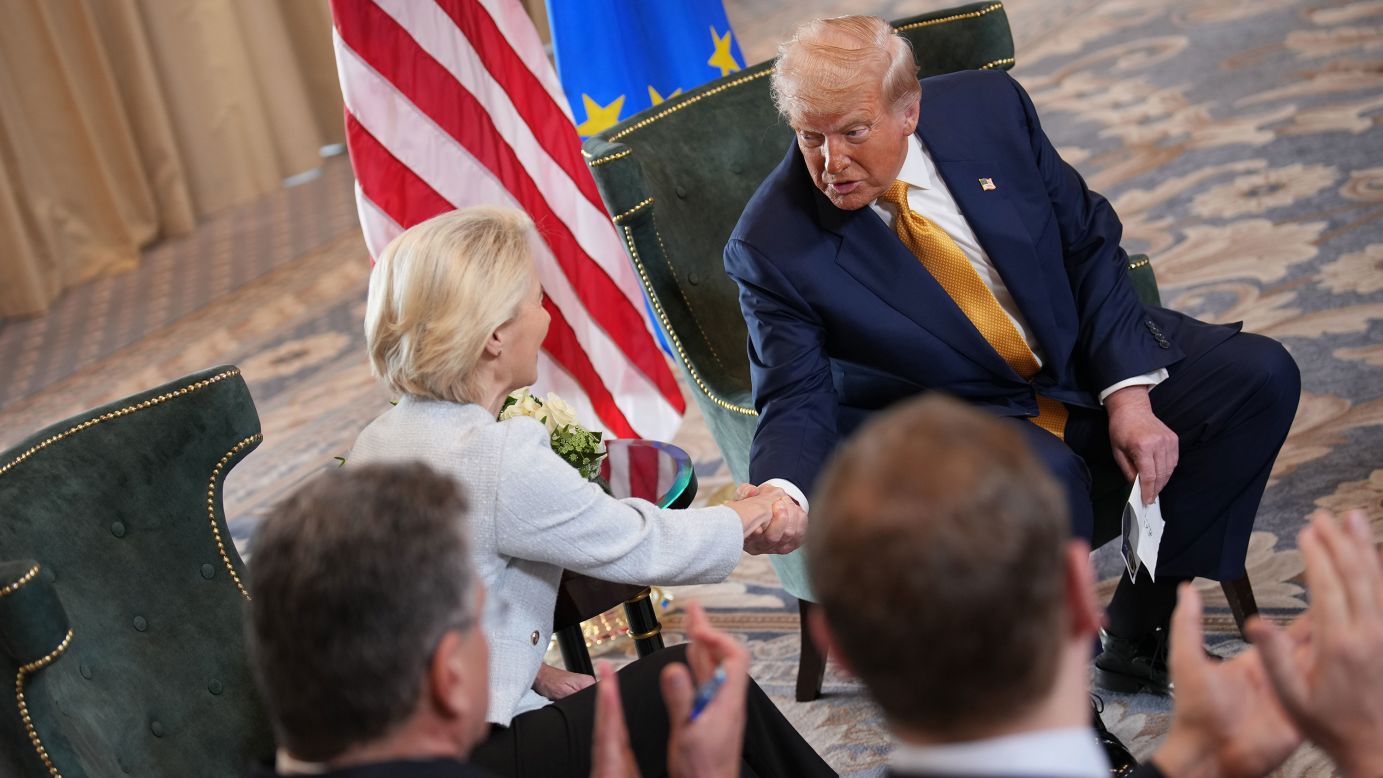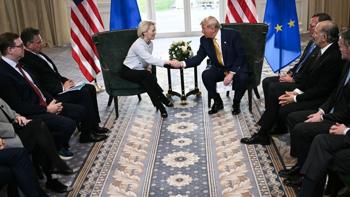Trump Hails Landmark US-EU Trade Agreement in Scotland as Talks Avert Economic Showdown
A New Chapter in Transatlantic Trade
Former President Donald Trump on Sunday declared a breakthrough in trade relations between the United States and the European Union, unveiling a sweeping framework agreement that he described as the “biggest deal ever made.” The announcement came after high-stakes negotiations with European Commission President Ursula von der Leyen at Trump’s Turnberry golf resort on Scotland’s west coast.
The agreement aims to reset trade dynamics between the world's two largest economies, reducing tensions that had been building for months over tariffs and market access. Trump’s declaration marked the end of an intense period of negotiation marked by looming tariff threats and the risk of a transatlantic trade war.
Key Elements of the Trade Framework
Standing beside von der Leyen, Trump detailed some of the highlights of the agreement:
Energy Commitments: The EU will purchase $750 billion worth of American energy, solidifying the US as a key supplier to the European bloc.
Investment Pledge: The European Union will invest an additional $600 billion into the US economy.
Military Equipment Sales: European nations will open their markets to US military equipment under zero-tariff terms.
Zero Tariffs: A promise to move toward zero tariffs across multiple sectors, significantly opening up trade routes.
Though full details of the framework have not been released, both leaders stressed the scope and importance of the arrangement. Von der Leyen emphasized the agreement would bring “stability” and “predictability” to future trade relations.
The Backdrop of Tariff Threats
Prior to Sunday’s agreement, Trump had imposed a 15% tariff on most EU imports, including key sectors such as:
Automobiles
Pharmaceuticals
Semiconductors
Pharmaceuticals, in particular, had been a point of contention. The US imported $155 billion worth of drugs from the EU last year, with Ireland being the leading supplier. Trump reiterated concerns about relying on foreign production for critical medications and suggested the new deal would help shift that dependence.
Trump had previously warned of a 30% tariff increase on August 1 if a deal was not reached. Earlier deadlines in April and May saw short-lived tariff hikes that were paused in hopes of reaching a broader agreement. Sunday’s deal effectively halted those plans.
European Leaders React
European reactions were cautiously optimistic. Germany’s Chancellor Friedrich Merz acknowledged the deal’s significance, saying it helped avoid a trade conflict that could have hurt Germany’s export-heavy economy. Italy’s Prime Minister Giorgia Meloni welcomed the news but noted she would await further details. Ireland’s Prime Minister Micheál Martin also praised the deal, though he acknowledged that increased tariffs might still pose future challenges.
What’s Next for Transatlantic Trade?
Although a full treaty has not yet been finalized, the framework drastically reduces the immediate threat of a trade war and establishes new economic commitments between the US and Europe.
Commerce Secretary Howard Lutnick, who appeared alongside Trump, stated that specific tariffs on semiconductors would be announced within two weeks. He emphasized that the August 1 tariffs would go into effect as planned unless individual countries strike separate deals or extensions.
Steel and aluminum tariffs will remain unchanged at 50%, and the US continues to engage other global partners such as South Korea and Brazil, which may face tariffs as high as 50%.
Broader Global Trade Outlook
This EU deal is just one of several ongoing US trade negotiations. Talks with China are still in progress, with an August 12 deadline fast approaching. The US currently maintains a 50% tariff on Chinese goods, and discussions are underway to determine whether further reductions or agreements can be reached. Treasury Secretary Scott Bessent is scheduled to meet with Chinese counterparts in Stockholm this week.
“We are very close to a deal with China,” Trump said during the Sunday announcement. “We really sort of made a deal, but we’ll see how that goes.”
Conclusion
Sunday’s agreement signals a significant shift in US-EU relations, promising more open trade and strategic cooperation across energy, defense, and key manufacturing sectors. While the deal is not yet fully finalized, it marks a major step toward reducing global economic friction and restoring stability between two of the world's largest economic powers. The coming weeks will reveal how the framework takes shape and what it means for global trade going forward.

